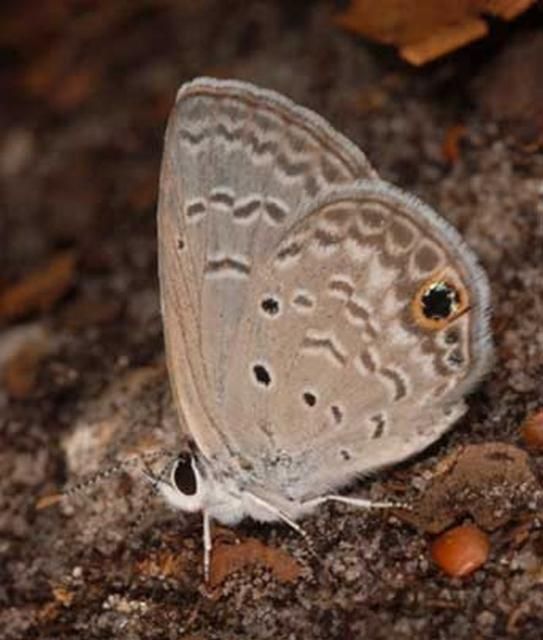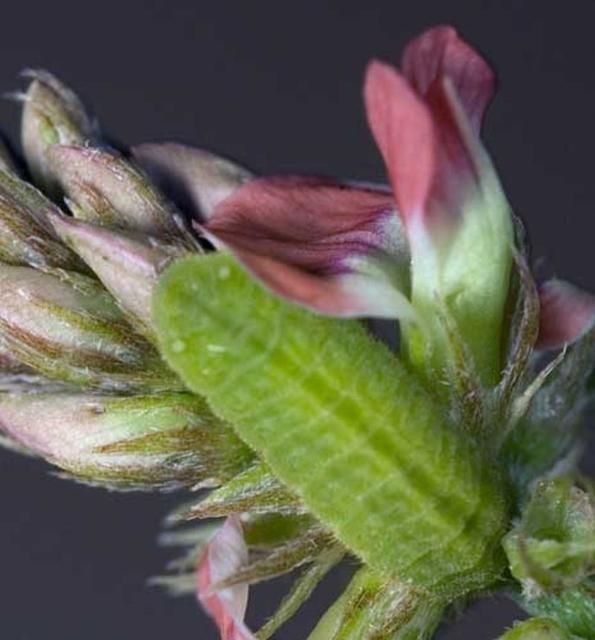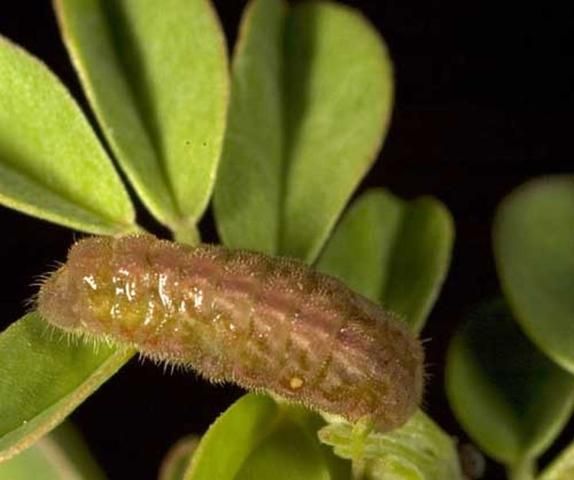Introduction
The ceraunus blue butterfly, Hemiargus ceraunus (Fabricius), is a widespread Neotropical butterfly common in southern portions of the United States. It is common in various open, sunny habitats including roadsides, fallow agricultural land, weedlots, utility corridors, scrubs, open woodlands, yards and parks.
Distribution
The ceraunus blue occurs across much of the extreme southern United States southward through Mexico, Central America and the West Indies to South America; occasionally strays northward. In Florida, it can be found in all 67 counties. It is common year-round in southern portions of the state.
Description
Adults: The ceraunus blue butterflies are small and easy to overlook. Adults have a wingspan range of 22 to 30 mm. The sexes are dimorphic. The upper surface of the wings is lavender-blue in males with a narrow black margin and a single black hindwing spot. Females are somewhat darker with blue scaling limited to the wing bases. The undersides of the wings are gray with dark bars, white bands and white-rimmed black spots. The hindwing has a prominent orange-rimmed black marginal spot.

Credit: Jaret C. Daniels, University of Florida
Larvae: The slug-like larvae are highly variable and range in color from light green to pinkish-red.

Credit: Jaret C. Daniels, University of Florida

Credit: Jaret C. Daniels, University of Florida
Pupae: The pupae are yellow-green.
Life Cycle
The ceraunus blue produces multiple generations each year. Adults may be found in all months of the year in southern Florida. Adults fly very low to the ground just above the vegetation. Females lay the small, somewhat flattened blue eggs singly on flower buds of a variety of herbaceous legumes. Larvae feed on the new growth, buds and flowers of the host plant.
Hosts
Hosts include a variety of herbaceous legumes: including rosary pea, Abrus precatorius L.; partridge pea, Chamaecrista fasciculata (Michx.) Greene; sensitive pea, Chamaecrista nictitans (L.) Moench; and indigo, Indegofera spp..
Selected References
Cech R, Tudor G. Butterflies of the East Coast: An Observer's Guide. 2005. Princeton University Press, Princeton, NJ. 345 pp.
Daniels JC. Butterflies of Florida Field Guide. 2003. Adventure Publications, Cambridge, MN. 250 pp.
Daniels JC. 2000. Butterflies 2: Butterflies of the Southeast. UF/IFAS. Card Set. SP 274.
Kimball CP. 1965. The Lepidoptera of Florida; an annotated checklist. Arthropods of Florida and Neighboring Land Areas Vol. 1. Florida Department of Agriculture and Consumer Services, Division of Plant Industry. 363 pp.
Minno MC, Butler JF, Hall DW. 2005. Florida Butterfly Caterpillars and Their Host Plants. University Press of Florida, Gainesville. 341 pp.
Minno MC, Emmel TC. 1993. Butterflies of the Florida Keys. Scientific Publishers, Gainesville. 168 pp.